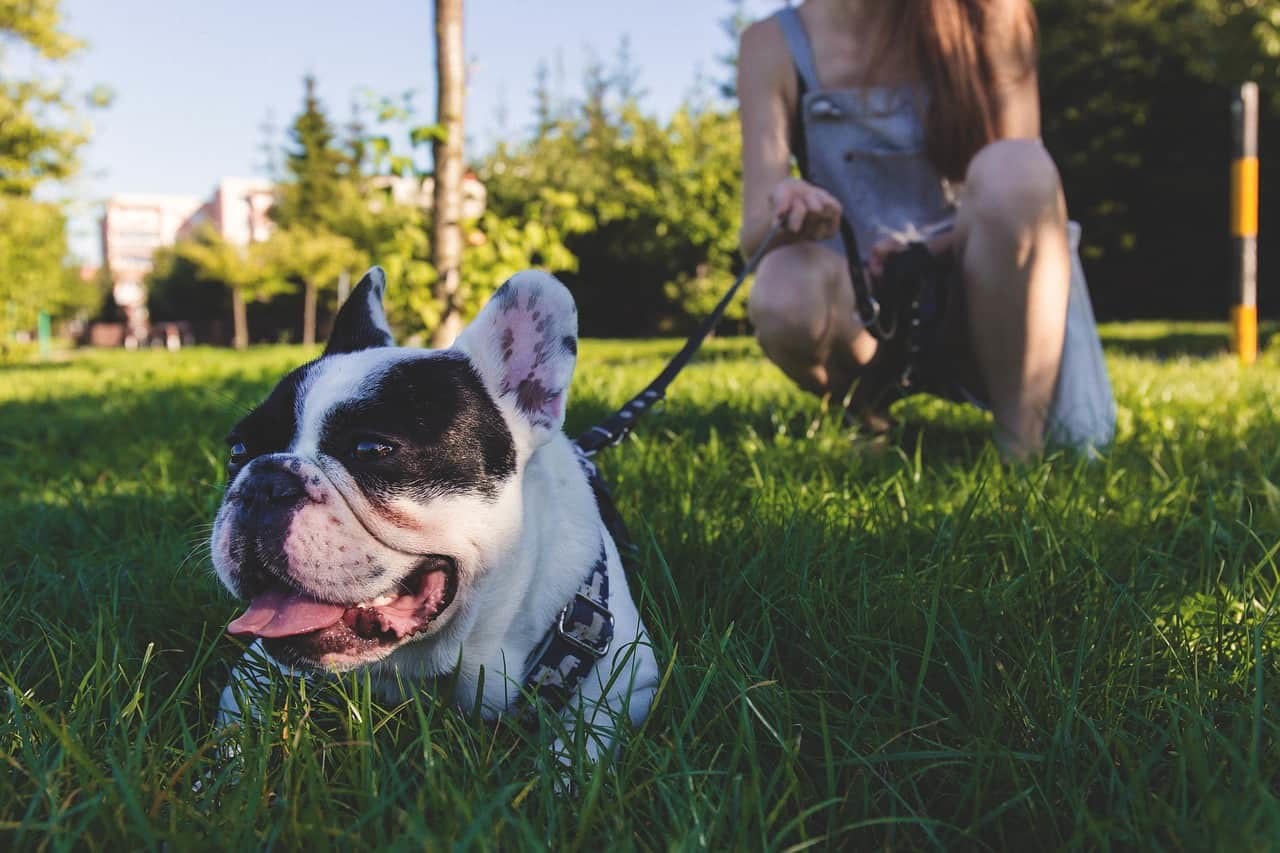It’s no secret that we strongly believe sharing your home and your life with a dog is a wonderful and rewarding experience. But we also know that it comes with challenges for both you and your dog. To make sure you get the most out of life with your pup, we’re sharing our favorite how-tos, tips, and tricks that every dog parent should know. Be sure to check back monthly for new educational content.
It seems that warmer weather is finally (maybe?) here to stay. For many of us, that means the chance to enjoy some much-needed outdoor exercise, and it’s only natural to wonder if your dog can join in the fun. After all, your furry friend has likely been dealing with cabin fever too!
While it’s understandable to want to include your pet on your next run in the park, it’s important to be mindful of how to make outdoor exercise safe and enjoyable. Read on for our tips and tricks to keep you and your pup having fun in the sun.
What to Know Before Running with Your Dog
Before bringing your pup along on any outdoor adventure, it’s important to be cognizant of their overall level of fitness and any health issues that may impact the duration and type of activity they can enjoy. If your dog already has a regular exercise routine and is used to consistent bouts of vigorous activity, they’ll likely have an easier time adjusting to running with you. If not, you can build a base level of fitness by slowly by increasing the length of their daily walks. Booking group walks or regular visits to dog daycare are good ways to gradually acclimate a couch-potato-pup to more consistent levels of exercise and activity.
Beyond your dog’s base level of fitness, it’s also important to consider any health issues that might make outdoor exercise—especially in the heat—difficult or even dangerous. For example, brachycephalic (aka short-nosed) dogs already have a harder time breathing in the heat, so taking them on a run when the mercury soars is ill-advised. Similarly, senior dogs may require shorter bouts of exercise, and you’ll want to make sure to avoid days with super-high temps and/or poor air quality. On the other hand, there are health risks associated with too much vigorous exercise for puppies (especially on hard surfaces). Their tiny joints and bones are still developing, and you’ll need to take extra care not to push them to the point of exhaustion. Ultimately, it’s always a good idea to check with your vet before starting a new and potentially taxing activity.
How to Get the Most Out of Running with Your Dog
Done right, running with your pup can become an amazing source of exercise for you both and a great way to strengthen your bond. You may find your pup is the perfect running buddy!
However, assuming your dog is healthy enough to join you on your runs, don’t expect success right away. Like anything new, it’ll take time for your pup to learn the ropes of this new activity. Be patient and be prepared to train your dog about the expectations for your runs together. Just because the first run doesn’t go perfectly, it doesn’t mean your dog can’t or won’t get the hang of things.
To set you both up for success, we’re sharing a few of our top tips for successfully running with your pup.
Make Sure to Include a Warm-Up
Going from standstill to full sprint is hard for anyone; your pup is no different. Make sure you enjoy a few minutes of walking before the run to let your dog loosen up and get out some of their fidgeting and sniffing. Bonus: If you give your pup a little time to do their business before the run, there’s less likelihood of needing to stop mid-run to scoop poop.
Bring the Essentials
You might not take anything other than your keys and your ID when you head out the door for a run but bringing your pet along makes things a bit different. You’ll want to have poop bags handy, of course. But don’t forget about water. Invest in a lightweight, portable dog water bottle to make sure your pup can stay hydrated.
Choose Your Leash Wisely
A too-long leash can lead to you and your pup tripping over it during your run, while a too-short option might result in you pulling and fighting against one another. A good rule of thumb is to choose a leash that is comfortable for you to hold and that is 4’ to 6’ in length.
Don’t Forget Protection
Getting outdoors carries risks along with the rewards. Make sure your pup is up to date on all vaccinations and that you’re keeping up with heartworm, flea, and tick preventatives. Additionally, be mindful of prolonged sun exposure. Dogs can get sunburn too, and some breeds are especially at risk. Pups with light-colored or thin coats, hairless breeds, and dogs who have less hair on their ears and noses can easily suffer sunburn without protection. Sunscreen, hats, or bandanas can all offer some protection. However, the best bet is to avoid running when the sun is at its strongest (generally 12-4 pm) and to choose shaded trails and paths whenever possible.
Look Out for Warning Signs of Overexertion
Panting is your dog’s way of regulating their temperature and is to be expected during activity—especially when it’s warm outside. But if your pup can’t catch their breath, is drooling excessively, or is suffering from vomiting or diarrhea, then their body is telling you something is wrong. Additionally, if your dog stops and refuses to go on, don’t force them to continue. Take a break, offer water, and allow them time to recover. Do be sure to monitor your pup’s water intake and offer water in small amounts at a time. Drinking too much and/or too fast during or after exercise can cause harmful conditions like bloat and may even be fatal. (This is another reason to start slow and build up to greater efforts!)
Along the same lines, don’t feed your dog treats or a meal too quickly after running. Give them lots of pets, praise, and attention instead. Then, when they’ve had time to cool down and calm down, go ahead and let them enjoy a well-earned snack.
Pay Attention to Their Feet
You probably have shoes you bought just for running. In fact, it’s likely that running shoes were a purchase you researched thoroughly to make sure you were getting the best protection and performance for your feet. Your pup deserves the same. Hot pavement is hard on their paws and can cause blisters, abrasions, and even burns.
Running on dirt or grass trails is one way to help protect your pup’s paws, as is using booties specially designed to offer traction and protection. Another good rule of thumb is to run along shaded routes and to run in the morning or evening hours when there’s less risk of injury to their feet. We previously shared a full-rundown of some surefire strategies to protect those paws, and our professional groomers can give your pup a soothing foot rub with paw balm as an add-on to any grooming service or as an à la carte spa treatment.
Finally, we hope you and your pup find lots of fun ways to enjoy the outdoors safely this summer. And when it’s simply too hot to trot, our air-conditioned playrooms are always here to offer a cool and safe way for your pup to burn off some energy!



